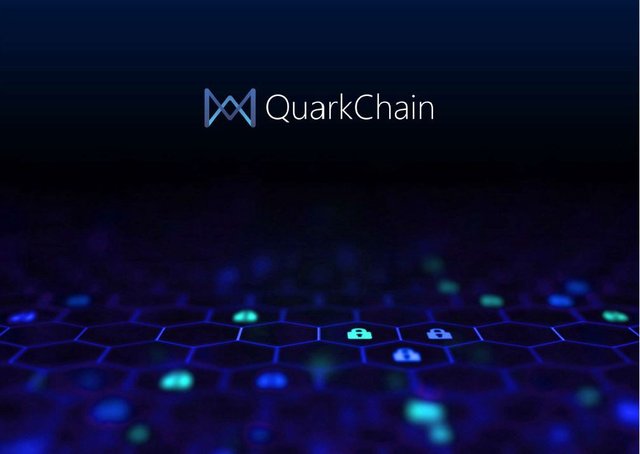The Feats and Features of QUARKCHAIN

A relatively new entrant to high throughput blockchains comes with the name Quarkchain. Their goal is to solve a problem that has been a thorn in the side for blockchains since the rapid rise of Bitcoin and its blockchain tech. Bitcoin is a large decentralized public blockchain that is just not as scalable as people want. Managing only 6 to 7 transactions per second, transaction fees are too high for people all over the world to be happy with. Quarkchain intends to solve this problem with a cleverly designed blockchain.
The key to achieving high transaction speeds is to minimize the time taken to validate transactions. The expert team behind Quarkchain have developed a two-layered blockchain that utilizes sharding technology, much like Zilliqa’s.
The two layers include an elastic sharded blockchain, responsible for processing, and a root blockchain, responsible for confirmation. The sharding technology will allow the network to adapt to processing demands and help manage transactions. If a shard is overloaded then the elastic nature of the minor blockchains will allow the provision of assistance.
Cross shard transactions are also a capability of the minor blockchains or shards and their capacity will increase linearly as the number of shards increase. Currently, Quarkchain employs 8 shards and have achieved over 2000 transactions per seconds in their testnet. The aim is 10,000 transactions per second by their next milestone. By Q2 2019 Quarkchain have planned to reach over a million transactions per second.
A powerful feature Quarkchain has over its major competitor, Zilliqa, is the fact that it facilitates dApps and smart contracts thanks to the EVM (Ethereum Virtual Machine).
Some people, however, have concerns regarding how Quarkchain will go about their high transaction speeds. Though the team plans to continuously introduce shards, and as a result the number of nodes, a fewer number of nodes would mean a fewer number of miners who would have greater power over the network.
To counter this, Quarkchain utilizes technology in the form of clustering, of which the founder has much experience for; Qi Zhou has previously attained 10 million IOPS for Dell EMC with clustering. Miners will act as their own mini-node, the amalgamation of which will form a full node. This would mean that even weaker miners can do their part mining solo; not to mention that hash power is evenly distributed between both layers in the blockchain.
The team behind Quarkchain are certainly considering the fundamental characteristics quite seriously, but only time will tell if their ultimate goal will be realized through their methodology.
Resources:
Portal: https://quarkchain.io/
Github: https://github.com/QuarkChain
Telegram: https://t.me/quarkchainio
Twitter: https://twitter.com/quark_chain
Reddit: https://www.reddit.com/r/QuarkChain/
Whitepaper: https://quarkchain.io/QUARK%20CHAIN%20Public%20Version%200.3.4.pdf
✅ @hasankarim, congratulations on making your first post! I gave you an upvote!
Please give me a follow and take a moment to read this post regarding commenting and spam.
(tl;dr - if you spam, you will be flagged!)
Congratulations @hasankarim! You received a personal award!
You can view your badges on your Steem Board and compare to others on the Steem Ranking
Do not miss the last post from @steemitboard:
Vote for @Steemitboard as a witness to get one more award and increased upvotes!